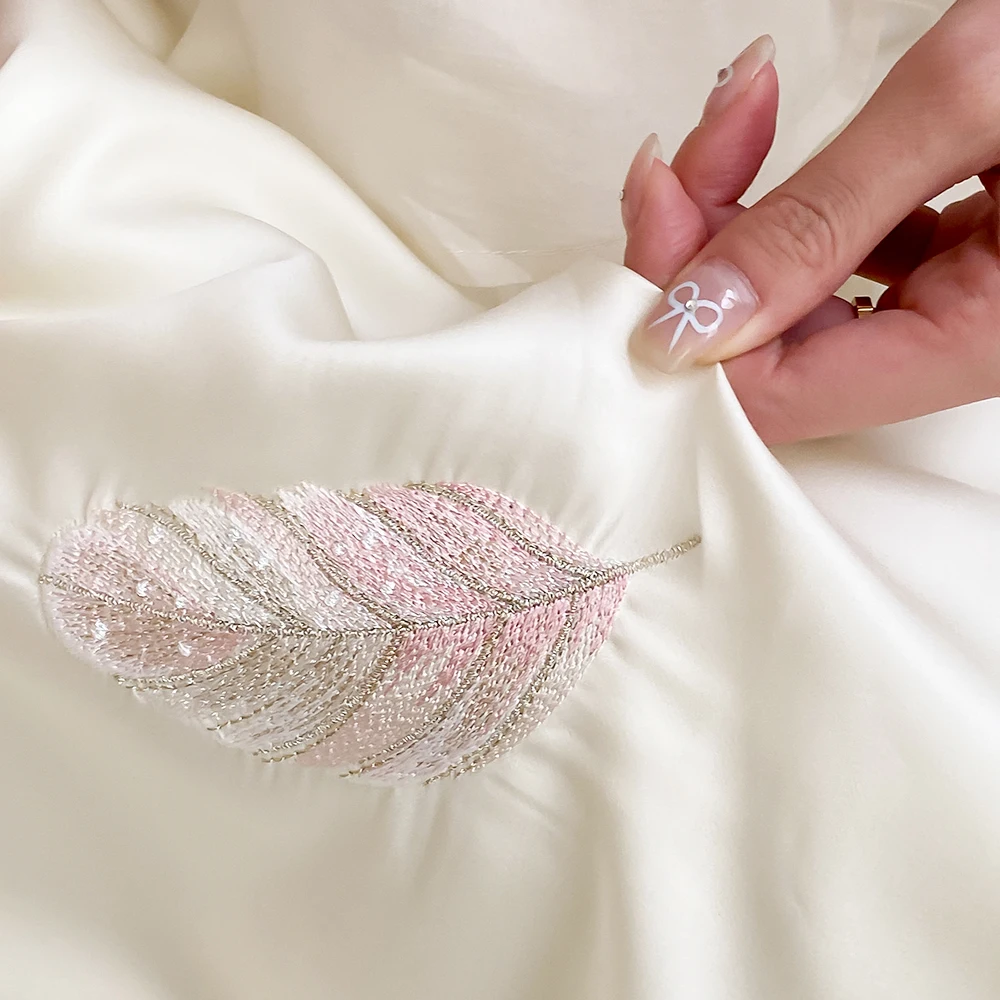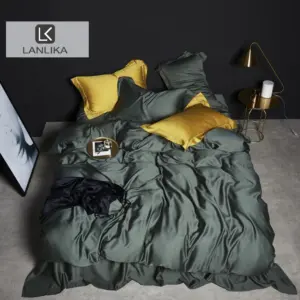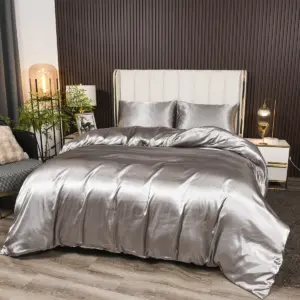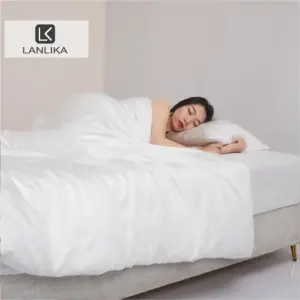Introduction: Are Silk Sheets Warm Enough for Winter?
Yes, silk sheets are absolutely suitable for winter use, despite what many might initially assume about this luxurious fabric. The secret lies in silk’s remarkable natural temperature-regulating properties, which work differently than traditional winter bedding materials. At the molecular level, silk fibers create a natural thermal barrier that adapts to your body’s needs, providing insulation while maintaining breathability.
What makes silk truly exceptional for winter use is its unique ability to:
- Trap body heat within its natural protein structure
- Adapt to your body temperature throughout the night
- Provide warmth without the heavy, restrictive feeling of thicker materials
- Balance temperature regulation with moisture control
At Sanctuary Soft, we’ve perfected our premium Mulberry silk products within the optimal 19-25 momme weight range specifically to enhance these natural properties, creating bedding that offers both sumptuous luxury and practical comfort during colder months.
Many who switch to silk bedding are pleasantly surprised to discover they can enjoy the amazing benefits of Mulberry silk sheets year-round, including during the chilliest nights of winter. The elegance and smoothness that make silk desirable in warmer months transform into cozy, adaptive comfort when temperatures drop.
This comprehensive guide will explore exactly how silk keeps you warm, its advantages over traditional winter bedding, and practical tips for maximizing its thermal properties when the mercury drops. Understanding why choose Mulberry silk sheets for winter can transform your cold-weather sleep experience into something truly extraordinary.
How Silk Naturally Regulates Temperature in Winter
The Science Behind Silk’s Winter Warmth
Silk’s ability to keep you warm in winter isn’t just luxury marketing—it’s firmly grounded in material science. The secret lies in the protein structure of silk fibroin, which creates microscopic air pockets throughout the fabric. These tiny air chambers trap your body heat, creating an insulating layer that works similarly to how down or wool functions, but with a much lighter feel.
What’s particularly remarkable about silk is that these same properties that keep you warm in winter also keep you cool in summer. This seemingly paradoxical behavior comes from silk’s unique thermal conductivity profile—it responds dynamically to both the environment and your body.
Beyond Basic Insulation: Moisture Management
In winter, proper moisture management becomes crucial for maintaining warmth. When we sleep, our bodies naturally release moisture—up to a cup of perspiration per night. Traditional winter fabrics like flannel or synthetic materials can trap this moisture against your skin, creating that clammy, uncomfortable feeling that disrupts sleep.
Silk, however, can absorb up to 30% of its weight in moisture without feeling wet, wicking away perspiration from your body. This moisture management is particularly important in winter when getting cold from dampness can wake you up or leave you feeling chilled.
The science of silk sheets’ temperature regulation demonstrates why they perform so well across seasons. During winter nights, you’ll notice that while silk may feel momentarily cool when you first slip into bed, it quickly warms to your body temperature and maintains that warmth throughout the night.
When choosing winter bedding, many discerning sleepers turn to Mulberry silk sheets specifically for their superior temperature-regulating properties compared to other silk varieties. The length and uniformity of Mulberry silk fibers create a more consistent thermal barrier, enhancing both warmth and breathability during cold nights.
The Unique Benefits of Silk Sheets During Cold Nights
When temperatures drop, silk sheets offer a range of advantages that make them particularly valuable for winter sleeping:
Lightweight Warmth: Silk provides insulation without the heavy, sometimes suffocating feel of traditional winter bedding, allowing for easier movement while sleeping.
Consistent Temperature Throughout the Night: Unlike other materials that can leave you alternating between too hot and too cold, silk maintains balanced warmth, reducing sleep disruptions from temperature fluctuations.
Skin Hydration Protection: Winter indoor heating systems notoriously dry out skin. Silk’s moisture-preserving properties help maintain your skin’s natural hydration levels, preventing the tight, itchy feeling often experienced in winter months.
Reduced Static and Hair Friction: The smooth surface of silk minimizes static electricity—a common winter annoyance—while also reducing hair breakage and morning bedhead that worsen in dry winter air.
Hypoallergenic Properties: When windows stay closed during winter, indoor allergens can accumulate. Silk’s natural resistance to dust mites, mold, and mildew creates a healthier sleeping environment.
The protein structure of silk closely resembles human skin, containing similar amino acids that benefit your skin’s health. This is why the Mulberry silk bedding skin benefits are particularly noticeable during winter months when skin is typically more sensitive and prone to irritation.
Many people who invest in silk bedding for its luxurious feel are pleasantly surprised to discover these practical winter benefits. Higher momme weights (22-25) provide enhanced insulation while maintaining silk’s signature lightweight feel. The natural protein structure of silk fibers works with your body’s temperature regulation systems rather than fighting against them, creating an ideal microclimate between your sheets regardless of the season.

What to Consider When Using Silk Sheets in Winter
Understanding Relative Warmth
While silk offers impressive insulation, it’s important to maintain realistic expectations about its warming properties compared to traditionally heavier winter materials. Silk provides what could be called “intelligent warmth”—sufficient insulation for most indoor sleeping environments without excessive heat retention. For extremely cold environments or unheated bedrooms, you may need to implement some of the layering strategies we’ll discuss later.
The Initial Cool Touch
One sensation that surprises first-time silk users in winter is the initial cool touch when first slipping into bed. This momentary coolness occurs because silk is highly conductive and quickly responds to temperature changes. The good news is that this sensation passes within seconds as the silk rapidly warms to your body temperature—much faster than cotton or synthetic materials.
Quality Factors Affecting Winter Performance
Not all silk sheets perform equally well in winter. The key factors that influence warmth include:
Momme Weight: Higher momme weights (22-25) provide better insulation than lighter options (19 momme), though even lightweight silk offers good temperature regulation.
Pure vs. Blended Silk: Pure Mulberry silk delivers superior thermal regulation compared to silk blends, which may incorporate synthetic materials that compromise insulation properties.
Weave Type: While charmeuse is the most common silk weave, some winter-specific silk sheets feature slightly denser weaves that enhance warmth without sacrificing breathability.
When considering whether silk bedsheets are worth the investment for winter use, these quality factors should weigh heavily in your decision. Higher quality silk bedding not only performs better in temperature regulation but also maintains its properties longer, offering better value despite the higher initial cost.
How to Maximize Warmth with Silk Sheets in Winter
To get the most comfort from your silk sheets during the coldest months, consider these effective strategies:
Layer strategically: Place silk sheets directly against your skin, then add layers of increasing warmth above. A lightweight down or wool duvet over silk sheets creates an ideal combination of comfort and insulation.
Choose optimal momme weight: For winter use, select silk sheets in the 22-25 momme range. This higher density provides enhanced insulation while maintaining silk’s characteristic softness and breathability.
Pre-warm your bed: Use a hot water bottle or electric blanket to warm your bed before sleeping (just remove electric devices before getting in). The heat retention properties of silk will maintain this warmth throughout the night.
Pair with the right sleepwear: Silk or merino wool pajamas complement silk sheets perfectly, as they work with similar temperature-regulating principles.
Maintain ideal room temperature: Set your bedroom between 65-68°F (18-20°C)—slightly cooler than daytime temperatures but warm enough to complement silk’s insulating properties.
Add a silk duvet cover: Maximize the thermal benefits by combining silk sheets with duvets that also utilize silk covers, creating a complete temperature-regulating sleep system.
For comprehensive winter warmth, consider investing in complete silk bedding sets that include sheets, pillowcases, and duvet covers designed to work in harmony. The matched components create a consistent sleep environment that maximizes silk’s natural thermal properties.
The beauty of these approaches is that they maintain silk’s lightweight comfort while enhancing its warming capabilities. You’ll avoid the heavy, restricted feeling often associated with winter bedding while enjoying consistent, comfortable warmth throughout the night.
Silk vs. Other Popular Winter Bedding Materials
When evaluating winter bedding options, understanding how silk compares to other popular materials can help you make an informed choice:
| Material | Initial Warmth | Temperature Regulation | Moisture Management | Weight/Feel | Skin Compatibility |
|---|---|---|---|---|---|
| Silk | Cool initially, then warm | Excellent | Excellent | Lightweight, smooth | Excellent for sensitive skin |
| Flannel | Very warm immediately | Poor (can overheat) | Poor (retains moisture) | Heavy, fuzzy | Can irritate sensitive skin |
| Cotton | Cool initially, warms slowly | Moderate | Moderate | Medium, varied texture | Good for most skin types |
| Wool | Warm immediately | Good | Good | Heavy, can be scratchy | May irritate sensitive skin |
| Fleece | Very warm immediately | Poor (can overheat) | Poor (creates static) | Medium, soft | Can cause overheating |
Flannel sheets, while providing immediate warmth, lack silk’s temperature-regulating capabilities and tend to trap moisture, potentially leaving you feeling clammy as the night progresses. Cotton flannel also pills over time, diminishing both comfort and appearance.
Cotton sateen offers decent warmth but lacks silk’s moisture-wicking capabilities, while percale cotton tends to sleep too cool for winter comfort. Wool provides excellent warmth but at the cost of much greater weight and potential skin irritation for sensitive individuals.
Synthetic materials like microfiber or polyester fleece provide immediate warmth but typically create poor breathability, often leading to overheating and night sweats. They also generate significant static electricity in dry winter environments.
For those seeking the pinnacle of winter comfort, luxury silk bedding sets offer a balanced approach that addresses the limitations of these alternative materials, providing both immediate and sustained comfort throughout the coldest nights.
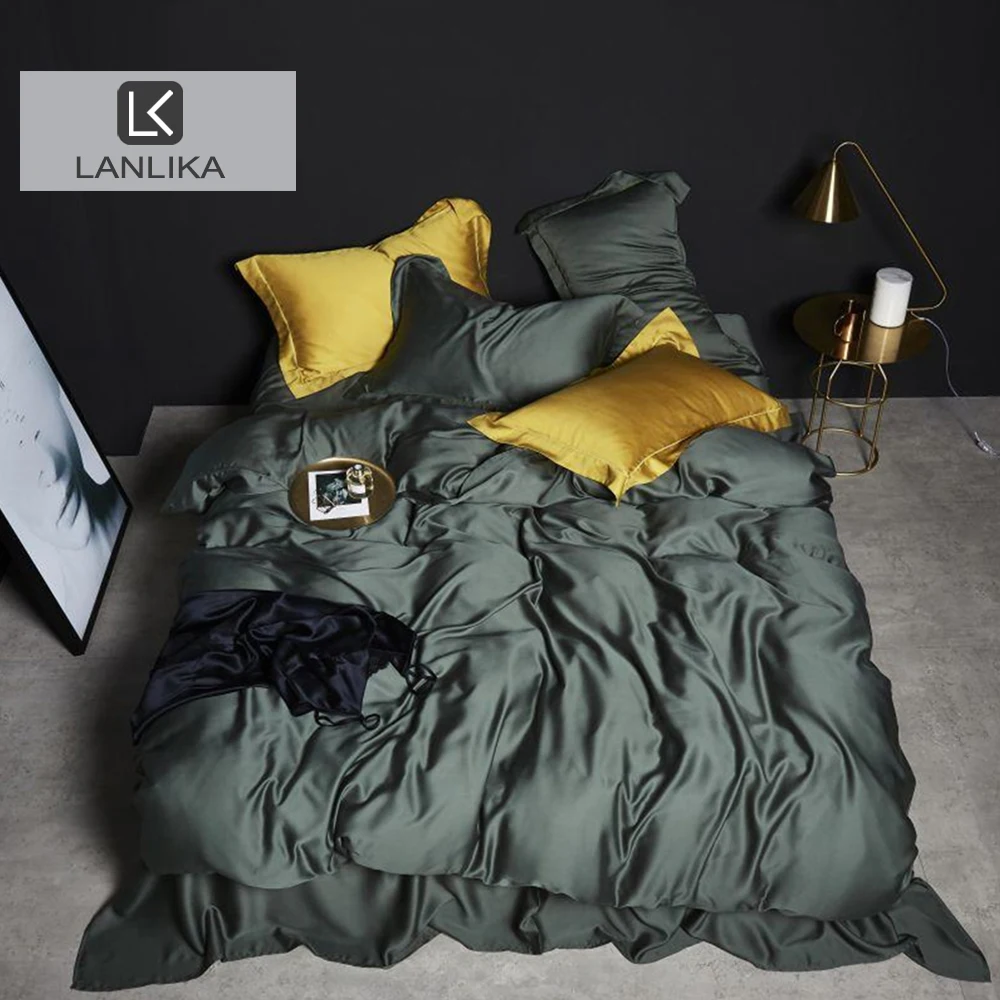
The Year-Round Value of Investing in Silk Sheets
Investing in high-quality silk sheets represents more than a seasonal purchase—it’s a long-term investment in your sleep quality across all seasons. Consider these compelling aspects of silk’s year-round value:
• Superior Longevity: Premium silk sheets can last 5-10 years with proper care, compared to 2-3 years for typical cotton sheets, making the higher initial investment more economical over time.
• Seamless Seasonal Transition: The same set of silk sheets that keeps you cozy in winter will help you stay cool and comfortable during summer months, eliminating the need for seasonal bedding rotations.
• Environmental Benefits: Purchasing one set of durable, versatile bedding reduces consumption compared to buying separate seasonal sets, decreasing your environmental footprint.
• Consistent Health Benefits: Silk’s hypoallergenic, skin-friendly properties provide year-round benefits for those with sensitive skin or allergies—issues that can fluctuate but never disappear with changing seasons.
• Consistent Sleep Quality: Temperature regulation remains important throughout the year, making silk’s adaptive properties valuable regardless of season.
Understanding how silk sheets keep you warm in winter while cooling in summer reveals why they represent such excellent value. Their versatility eliminates the need for different bedding sets as seasons change, streamlining your linen closet while providing consistent luxury.
When selecting year-round bedding, 100% silk sheets offer the most consistent performance across seasons compared to blends or lower-grade alternatives. The initial investment delivers returns in comfort, convenience, and longevity that make silk sheets a practical luxury rather than a splurge.
100% Silk Sheets, Green Silk Sheets, King Size Silk Bedding Set, Mulberry Silk Bedding Sets, Queen Size Silk Bedding Set
$1,246.21 – $1,615.22 Select options This product has multiple variants. The options may be chosen on the product pageFull Silk Bedding Set, King Size Silk Bedding Set
$120.99 – $190.49 Select options This product has multiple variants. The options may be chosen on the product pageGrey Silk Sheets, Silk Sheet and Pillowcase Set
$88.20 – $146.64 Select options This product has multiple variants. The options may be chosen on the product pageBamboo Silk Sheets, Cooling Silk Sheets
$130.76 – $177.80 Select options This product has multiple variants. The options may be chosen on the product page100% Silk Sheets, King Size Silk Bedding Set, Mulberry Silk Bedding Sets, Queen Size Silk Bedding Set, White Silk Sheets
$1,000.79 – $1,351.42 Select options This product has multiple variants. The options may be chosen on the product pageMulberry Silk Fitted Sheet, Mulberry Silk Sheets
$486.21 – $944.97 Select options This product has multiple variants. The options may be chosen on the product page
Essential Care Tips for Silk Sheets in Winter
Maintaining your silk sheets properly during winter months ensures they continue performing optimally while extending their lifespan:
Winter Washing Protocol: Wash silk sheets less frequently in winter (every 2-3 weeks versus weekly in summer), as body oils and perspiration accumulate more slowly in cooler months. Always use cold water and pH-neutral detergents specifically formulated for silk.
Cold Weather Drying: Never tumble dry silk sheets, especially in winter when indoor heating reduces humidity. Air dry by laying flat on a clean white towel away from direct heat sources and sunlight. Indoor drying may take longer in winter due to higher humidity, so allow adequate time.
Static Prevention: Winter’s dry air increases static electricity. Add 1/4 cup of white vinegar to your rinse cycle to neutralize static charge. Never use dryer sheets or fabric softeners, which damage silk fibers.
Humidity Management: Consider using a humidifier in your bedroom during winter months to maintain 40-60% humidity, preserving silk’s natural moisture content and preventing brittleness.
Proper Storage: When not in use, store silk bedding in breathable cotton bags rather than plastic, allowing the fabric to breathe while protected from dust.
For silk bedding exposed to particularly dry winter environments, occasional refreshing with a silk-specific fabric spray can help maintain optimal moisture levels in the fibers. This prevents the brittleness that can lead to damage over time.
These winter-specific care adjustments complement standard silk care practices and ensure that your cooling silk sheets remain in perfect condition to transition back into warmer months when the season changes.
Common Questions About Using Silk Sheets in Winter
Do silk sheets feel cold when you first get into bed in winter?
Yes, silk initially feels cool to the touch because of its high conductivity. However, it warms to your body temperature within seconds—much faster than cotton or synthetic materials—and then maintains that warmth throughout the night.
What momme weight provides the most warmth for winter use?
For optimal winter warmth, choose silk sheets in the 22-25 momme range. This higher density provides better insulation while maintaining breathability. The 19 momme range works well in moderately cold environments, while sheets below 19 momme may require additional layering in very cold conditions.
Can I use an electric blanket or heated mattress pad with silk sheets?
Yes, you can use electric heating devices with silk sheets, but with important precautions. Use the electric device to pre-warm your bed, then turn it off or to a very low setting before sleeping. Direct, continuous heat can damage silk fibers over time and negate silk’s natural temperature-regulating benefits.
How do silk sheets compare to flannel for warmth?
Flannel provides immediate warmth upon contact but may cause overheating and moisture buildup during the night. Silk feels briefly cool initially but provides consistent, regulated warmth throughout the night while wicking away moisture. Flannel is warmer at first touch; silk provides more balanced comfort over time.
Are silk sheets worth the investment for just winter use?
Most customers find greater value using silk sheets year-round rather than seasonally. Their temperature-regulating properties work effectively across seasons, and their durability (5-10 years with proper care) makes them economically competitive with purchasing separate seasonal sheet sets.
Do silk sheets generate static electricity in winter?
High-quality Mulberry silk generates significantly less static electricity than synthetic fabrics or lower-quality silk blends. To further reduce static in very dry winter environments, maintain bedroom humidity between 40-60% and use the vinegar rinse method during washing.
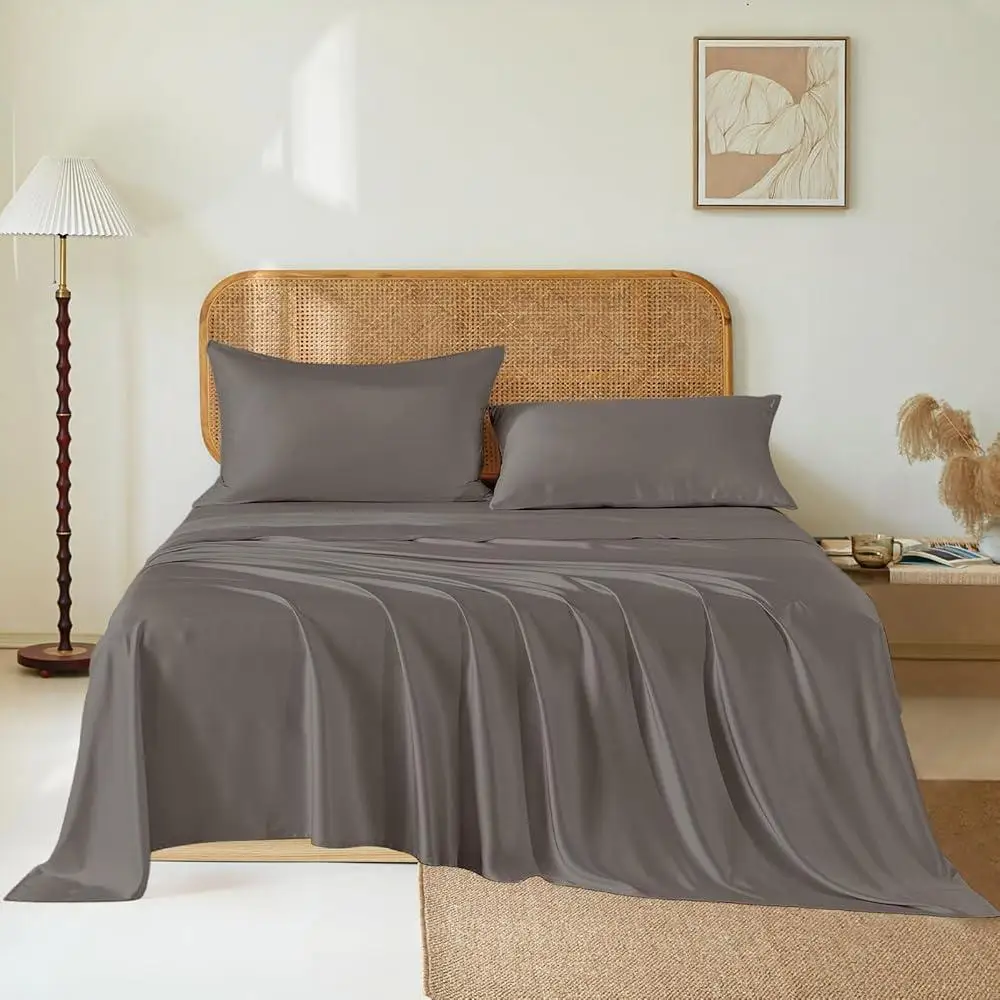
Conclusion: Embracing Winter With Luxurious Silk Comfort
Silk sheets offer a sophisticated solution to winter sleep comfort, providing intelligent warmth that adapts to your body throughout the night. Their natural temperature-regulating properties, combined with moisture-wicking capabilities and skin-friendly benefits, make them uniquely suited to address winter sleeping challenges without the bulk and overheating risks of traditional cold-weather bedding.
While silk requires an initial investment and thoughtful care, its year-round versatility and exceptional durability make it a practical luxury that delivers genuine value. By following the layering techniques and care guidelines we’ve outlined, you can maximize silk’s natural warming properties during even the coldest nights.
The complete guide to Mulberry silk bed sheets reveals why more discerning sleepers are making the switch to silk year-round. The combination of sensuous luxury and practical performance creates an unmatched sleeping experience that transforms winter nights from something to be endured into a seasonal pleasure to be savored.
As temperatures drop, wrap yourself in the adaptive comfort of high-quality silk bedding and discover a new standard for winter sleep—where luxury and practicality blend seamlessly in perfect harmony.

